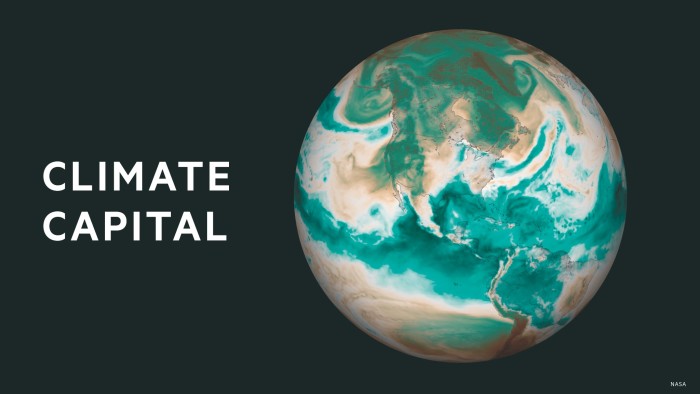Stay informed with free updates
Simply sign up to the Climate change myFT Digest — delivered directly to your inbox.
An $88mn satellite backed by Google, Jeff Bezos and Elon Musk’s SpaceX has been lost in space, in a blow to global efforts to detect the planet-warming emissions of the powerful greenhouse gas methane from the oil and gas industry.
The MethaneSAT satellite was launched in March 2024 aboard SpaceX to monitor plumes and leaks of methane, an invisible greenhouse gas responsible for almost a third of the world’s warming in the industrial era.
But this week, MethaneSAT said the satellite had “lost power and that it is likely not recoverable”.
“The engineering team is conducting a thorough investigation into the loss of communication. This is expected to take time,” a statement said, adding that its work on tackling methane emissions would continue.
The Environmental Defense Fund, the non-profit that had spearheaded the satellite, told the Financial Times it was “too early to say whether another satellite will be launched”.
“Right now, the focus is on understanding what happened, continuing to process and release the high-quality methane data MethaneSAT already collected, and applying the proven technology and insights from the mission.”
The device, which was described as “one of the most advanced methane tracking satellites in space”, had been gathering data and images of emissions at oil and gas sites across the world.
It was one of a growing number of satellites that had sprung up to collect data on methane leaks as countries and fossil fuel companies across the world pledged to address emissions of the highly potent gas in recent years.
More than 100 countries led by the US and Europe signed up in 2021 to a global methane pledge to cut emissions 30 per cent by the end of the decade.
The energy industry is the second-biggest contributor to human-caused methane emissions after agriculture. But addressing the industry’s methane emissions is viewed as among the cheapest and quickest opportunities for tackling global warming currently available.
Experts have warned, however, that energy companies have found numerous ways to hide the magnitude of their emissions, making technology such as satellites crucial for tracking emissions.
“Oil and gas is emitting far more methane than we realise,” Eric Kort, professor of climate, space sciences and engineering at the University of Michigan, told the FT last year.
The Bezos Earth Fund, Bezos’ philanthropic arm, said last July that it would provide $10mn in funding to the EDF to support MethaneSAT, after it had already provided a three-year $100mn donation in 2020. The satellite was also backed by the New Zealand government and others.
Google had also provided AI computing capabilities required to crunch vast amounts of data produced by the orbiting methane monitor.
The satellite was designed to measure methane emissions that some other satellites cannot. It could also calculate total emissions, where they come from and how they change over time.
World energy methane emissions remained at near-record levels in 2024, with the International Energy Agency saying earlier this year that 70 per cent of such emissions could be avoided at a low cost.
Climate Capital

Where climate change meets business, markets and politics. Explore the FT’s coverage here.
Are you curious about the FT’s environmental sustainability commitments? Find out more about our science-based targets here
